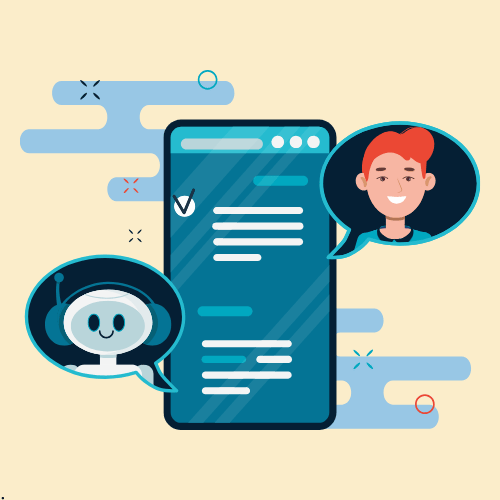Harnessing AI Chatbot Traffic for Smarter Content Marketing Strategies

You’re checking your analytics dashboard on a Tuesday morning, coffee in hand, when something catches your eye. There’s been a traffic spike, but it’s not coming from where you’d expect. It’s not Google. Not Facebook. Not even that viral TikTok you posted last week.
It’s from AI chatbots.
Welcome to 2025, where ChatGPT and its digital cousins are quietly becoming some of the web’s biggest traffic drivers. While you’ve been optimizing for search engines, millions of people have started asking AI for recommendations instead. And here’s the thing—they’re clicking through to real websites, including yours.
This shift isn’t just interesting; it’s actionable. Once you understand how AI chatbot traffic works, you can start shaping your content strategy around it. Think of it as getting early access to a new social platform, except this one’s already got billions of users.
Chapters
The Numbers That’ll Make You Rethink Your Traffic Strategy

Let’s paint you a picture with some recent data. In May 2025, ChatGPT alone generated 5.49 billion visits. That’s not a typo. For context, Google’s little sibling Gemini managed 527.7 million, while the newcomer DeepSeek hit 436.2 million. These aren’t just people chatting with bots—they’re getting recommendations and clicking through to websites.
Here’s what makes this traffic different from your typical Google search visitor. When someone asks ChatGPT “What’s the best project management tool for a remote team of 12 people?” they’re not casually browsing. They’ve got a specific problem and they’re ready to solve it. That’s the kind of visitor who converts.
Tools like Similarweb’s AI Traffic Checker help dig into this trend, and the insights are fascinating. You can actually see which pages on your site are getting chatbot traffic and—this is the gold mine—what prompts are driving those clicks. Imagine knowing the exact questions people asked before landing on your pricing page.
The engagement story gets even better. A 2024 report showed that 67% of consumers who used chatbots for support ended up making purchases. These aren’t tire-kickers; they’re people with intent.
Your content strategy just got a new best friend.
Reverse Engineering Success: What Questions Are Sending People Your Way?
When you dig into your AI chatbot traffic data, you’re not just seeing visitor numbers. You’re seeing the actual conversations that led people to your site. Instead of guessing what your audience wants to know, you’ve got their questions spelled out for you.
Let’s say you run an e-commerce site selling outdoor gear. Traditional keyword research might tell you to target “hiking boots.” But chatbot prompt data might reveal that people are asking, “What hiking boots work best for someone with flat feet who wants to tackle the Appalachian Trail in October?”
That’s not just a keyword—that’s a content goldmine.
One client discovered their biggest traffic driver was ChatGPT users asking about “CRM software that doesn’t require a computer science degree to set up.” They hadn’t been targeting that angle at all, but once they created content around it, their chatbot referrals tripled in two months.
The beautiful thing about this approach is that it works for any industry. A skincare brand might find their vitamin C serum page getting traffic from people asking about “gentle brightening products for sensitive skin over 40.” A B2B software company might discover prospects asking about “project management tools that actually help with client communication, not just task lists.”
Once you know these prompts, creating content becomes strategic rather than guesswork. You’re literally answering the questions your potential customers are already asking.
And here’s a bonus: this content doesn’t just help with chatbot traffic. Search engines are still feeding data to these AI systems, so optimizing for chatbot queries often improves your SEO too.
Makes sense, right?
Making Your Pages Irresistible to AI Recommendations

Not every page on your website is created equal when it comes to earning chatbot recommendations. Some pages seem to attract AI chatbot traffic like magnets, while others get ignored completely.
The pattern isn’t random, though.
Chatbots love pages that answer questions clearly and completely. They’re drawn to content that’s structured logically—think clear headings, bullet points, and sections that flow naturally from problem to solution. It’s like they’re scanning for the most helpful, comprehensive answer they can find.
Pages that start with a clear problem statement, break down solutions into digestible chunks, and include specific examples tend to get recommended more
often. Meanwhile, pages that dance around topics or bury key information tend to get passed over.
Here’s something specific you can try today: look at your highest-performing pages in terms of chatbot traffic (if you’re tracking it) or your most comprehensive how-to content (if you’re not). What makes them different from your other pages?
Often, it comes down to completeness and structure. A financial advisor’s page about “retirement planning” might get ignored, but their page about “how to catch up on retirement savings if you’re starting at 45” could become a chatbot favorite because it addresses a specific scenario with actionable steps.
This optimization becomes even more critical when you consider the market trajectory. The global AI chatbot market is expanding rapidly, projected to grow from $15.572 billion in 2024 to $46.641 billion by 2029—that’s a 24.53% compound annual growth rate. This surge is driven by businesses increasingly relying on automated solutions for customer service and operational efficiency. What does this mean for you? More chatbots will be scanning and recommending content, making page optimization not just helpful but essential.
The competitive angle here is fascinating too. You can actually benchmark your pages against competitors who are getting more chatbot traffic. Sometimes it’s as simple as adding more detail, including relevant examples, or restructuring information to be more scannable.
One SaaS company increased their chatbot-driven traffic by 20% just by reorganizing their feature pages to match the structure of a competitor’s higher-performing content. They didn’t copy anything—they just made their information more accessible and complete.
But there’s more to consider here.
Your Social Strategy’s New Secret Weapon
Here’s where things get interesting: those chatbot prompts that are driving traffic to your website? They’re also perfect inspiration for social content.
Think about it. If people are asking ChatGPT “What are the best solo travel destinations for introverts,” and that question is sending traffic to your travel blog, why not create a TikTok series about exactly that topic? You’re essentially creating content around questions you know people are already asking.
This creates a beautiful feedback loop. Your social content reaches people who might not have found you through chatbots, but it also reinforces your authority on topics that chatbots are already recommending you for. It’s like having insider information about what your audience really wants to know.
The app download numbers tell part of this story. In April 2025, Gemini led App Store downloads with 8.15 million, DeepSeek grabbed 5.75 million, and Grok pulled in 5.36 million. People aren’t just using these tools occasionally—they’re making them part of their daily digital routine.
A fitness brand noticed AI chatbot traffic coming to their workout guides from prompts about “home exercises for busy parents.” So they started a YouTube series called “5-Minute Parent Workouts” and created Instagram posts with quick exercises you can do while kids are watching TV.
The result? Their chatbot traffic stayed strong, but they also saw a 25% increase in social engagement and a boost in direct traffic as people started coming to them first instead of asking AI.
But here’s the key: don’t just repurpose the same content across platforms. Use the prompt insights to create platform-specific content that feels native to each space. A LinkedIn article about productivity tools should feel different from a Twitter thread about the same topic, even if they’re both inspired by the same chatbot query.
Your audience expects that level of sophistication now.
Staying Ahead When Everything’s Changing Fast

The chatbot landscape is moving fast, and honestly, that’s both exciting and a little overwhelming.
ChatGPT still dominates with 79.8% of referral traffic, but Perplexity is growing (11.8%) and Microsoft’s Copilot is gaining ground (5.2%). What this means for you is that the game isn’t settled yet. There’s still room to establish yourself as a go-to source across multiple platforms.
Interactive content like quizzes seems to perform well—one client saw an 18% boost in chatbot traffic after adding a “Which productivity system fits your work style?” quiz to their site.
The bigger picture here is that chatbots aren’t replacing search engines; they’re adding another layer to how people discover content. A recent study showed chatbots grew 80.92% year-over-year, but search engines still handled 163.7 billion visits in March 2025.
This means you need to think about both channels, not choose between them.
Here’s practical advice: use your AI chatbot traffic insights to inform your broader content strategy. If you’re getting chatbot referrals for “budget-friendly project management software,” make sure you’re also optimizing for related search terms. Create content that works for both the person typing into Google and the person having a conversation with Claude.
The brands that’ll win in this space are the ones treating AI traffic as part of a larger ecosystem rather than a separate channel. Your content should work whether someone finds it through a chatbot recommendation, a Google search, or a social media share.
Where This All Leads
AI chatbot traffic represents something bigger than just another traffic source. It’s a glimpse into how people want to interact with information—conversationally, specifically, and with immediate relevance to their actual problems.
The marketers who are succeeding with this aren’t just chasing traffic numbers. They’re using chatbot insights to understand their audience more deeply, create more targeted content, and build stronger connections across all their channels.
Yes, the landscape is changing quickly. Yes, it requires some new tools and approaches. But the fundamental principle hasn’t changed: provide genuinely helpful content that answers real questions, and people will find their way to you—whether through search engines, social platforms, or AI assistants.
The opportunity here isn’t just about optimizing for chatbots. It’s about becoming the kind of resource that deserves to be recommended, regardless of how people discover you. When you nail that, the traffic—from AI and everywhere else—tends to follow.
Start small. Pick one page that’s already getting some chatbot traffic, understand what prompts are driving those visits and optimize from there. Then expand. The data will guide you, but your creativity and expertise will set you apart.
After all, AI might be getting better at finding answers, but it still needs humans to create them.
Other Interesting Articles
Master the Art of Video Marketing
AI-Powered Tools to Ideate, Optimize, and Amplify!
- Spark Creativity: Unleash the most effective video ideas, scripts, and engaging hooks with our AI Generators.
- Optimize Instantly: Elevate your YouTube presence by optimizing video Titles, Descriptions, and Tags in seconds.
- Amplify Your Reach: Effortlessly craft social media, email, and ad copy to maximize your video’s impact.
The post Harnessing AI Chatbot Traffic for Smarter Content Marketing Strategies appeared first on StoryLab.ai.


Deixe um comentário